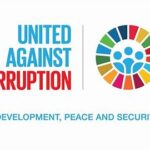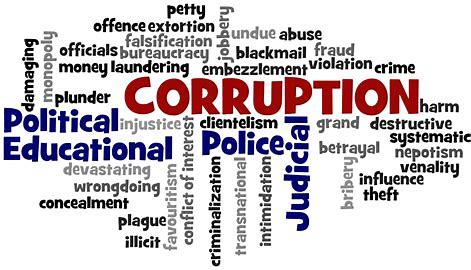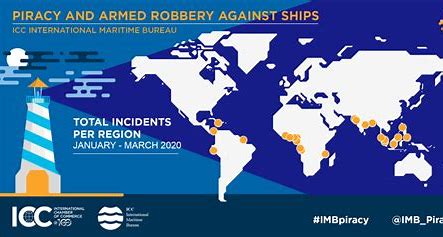Title: Corruption in International Organizations: Challenges, Implications, and Remedial Measures
Abstract:
Corruption within international organizations poses a significant threat to global governance, accountability, and sustainable development efforts. As key actors in addressing transnational challenges, such as poverty alleviation, peacekeeping, and human rights protection, international organizations wield substantial influence and resources. However, instances of corruption, fraud, and mismanagement within these institutions undermine their legitimacy, erode public trust, and impede progress towards achieving their mandates. This essay provides a comprehensive analysis of corruption in international organizations, exploring its root causes, consequences, and remedial measures.

Drawing on case studies, academic literature, and policy perspectives, it examines the complex dynamics of corruption, assesses the effectiveness of existing anti-corruption mechanisms, and offers recommendations for enhancing transparency, accountability, and integrity within international organizations.
Introduction:
International organizations play a crucial role in addressing global challenges and promoting cooperation among nations to achieve shared goals. From the United Nations (UN) and World Bank to regional bodies like the European Union (EU) and African Union (AU), these institutions serve as pillars of international governance, humanitarian assistance, and economic development. However, the effectiveness and credibility of international organizations are often undermined by instances of corruption, fraud, and ethical misconduct. This essay seeks to explore the phenomenon of corruption within international organizations, examining its underlying causes, consequences, and potential remedies. By analyzing case studies, empirical research, and policy frameworks, it aims to deepen understanding of the challenges posed by corruption and identify strategies for promoting transparency, accountability, and integrity in the global governance arena.
Understanding Corruption in International Organizations:
Corruption within international organizations can take various forms, ranging from financial embezzlement and bribery to nepotism and favoritism in recruitment and procurement processes. Some common manifestations of corruption within these institutions include:
Financial Mismanagement:
Instances of financial mismanagement, embezzlement, and misappropriation of funds intended for humanitarian assistance, development projects, or peacekeeping operations. Weak internal controls, inadequate oversight mechanisms, and a lack of transparency contribute to opportunities for fraud and corruption.
Bribery and Kickbacks:
Cases of bribery, extortion, and kickbacks involving officials within international organizations and external stakeholders, such as government officials, contractors, and suppliers. Bribery schemes may involve the awarding of contracts, the provision of favorable treatment, or the manipulation of decision-making processes in exchange for illicit payments or favors.

Nepotism and Cronyism:
Instances of nepotism, cronyism, and patronage in recruitment, promotion, and appointment processes within international organizations. Favoritism towards individuals based on personal connections, political affiliations, or familial ties undermines merit-based principles and erodes trust in the integrity of organizational practices.
Conflict of Interest:
Situations where individuals within international organizations have personal, financial, or professional interests that conflict with their official duties and responsibilities. Conflicts of interest may arise in decision-making processes, procurement activities, or policy formulation, leading to biased outcomes and compromised integrity.
Factors Contributing to Corruption in International Organizations:
Several factors contribute to the prevalence of corruption within international organizations, including:
Weak Governance Structures:
Inadequate governance structures, including weak internal controls, limited oversight mechanisms, and insufficient accountability mechanisms, create opportunities for corruption and abuse of power within international organizations.
Lack of Transparency:
A lack of transparency and access to information within international organizations can facilitate corrupt practices by shielding decision-making processes, financial transactions, and administrative procedures from public scrutiny.
Cultural and Institutional Norms:
Cultural and institutional norms within international organizations may perpetuate a culture of impunity, where corrupt behavior is tolerated or condoned due to entrenched practices, social norms, or organizational inertia.

Political Interference:
Political interference and external pressures from member states or donor countries can undermine the independence and integrity of international organizations, leading to compromises in decision-making and accountability.
Resource Constraints:
Resource constraints, budgetary pressures, and competing priorities may exacerbate vulnerabilities to corruption within international organizations, particularly in contexts where funding is limited or donor dependency is high.
Impact of Corruption in International Organizations:
Corruption within international organizations has far-reaching consequences, including:
Undermining Effectiveness:
Corruption undermines the effectiveness and credibility of international organizations, impairing their ability to fulfill their mandates and achieve their objectives in areas such as peacekeeping, humanitarian assistance, and development aid.
Erosion of Public Trust:
Instances of corruption erode public trust and confidence in international organizations, weakening support for multilateralism, global cooperation, and efforts to address transnational challenges.
Waste of Resources:
Corruption results in the misallocation and waste of scarce resources, diverting funds intended for development projects, poverty alleviation, and humanitarian assistance towards illicit purposes and personal enrichment.
Humanitarian Consequences:
Corruption within international organizations can have dire humanitarian consequences, including delays in the delivery of aid, diversion of assistance to unintended recipients, and exacerbation of poverty and inequality.
Security Risks:
Corruption within peacekeeping missions and security operations poses security risks, compromising mission objectives, undermining stability, and fueling conflict in conflict-affected regions.

Strategies for Combating Corruption in International Organizations:
Addressing corruption within international organizations requires a comprehensive and multi-dimensional approach, incorporating the following strategies:
Enhancing Transparency and Accountability:
Strengthening transparency and accountability mechanisms within international organizations, including the adoption of whistleblower protection policies, financial disclosure requirements, and independent oversight bodies.
Promoting Ethical Leadership:
Fostering a culture of ethical leadership and integrity within international organizations, emphasizing values such as honesty, integrity, and accountability among staff and leadership.
Improving Governance Structures:
Reforming governance structures and internal controls within international organizations to enhance transparency, accountability, and integrity in decision-making processes, financial management, and procurement practices.
Capacity Building and Training:
Providing training and capacity-building initiatives for staff and leadership within international organizations to raise awareness of corruption risks, promote ethical behavior, and strengthen compliance with anti-corruption policies and procedures.
Cooperation and Collaboration:
Enhancing cooperation and collaboration among international organizations, member states, civil society organizations, and other stakeholders to combat corruption, share best practices, and promote collective action.
Legal and Regulatory Frameworks:
Strengthening legal and regulatory frameworks governing international organizations to prevent and deter corruption, including the enforcement of anti-corruption laws, prosecution of perpetrators, and recovery of stolen assets.
Conclusion:

Corruption within international organizations represents a significant challenge to global governance, accountability, and sustainable development efforts. By understanding the root causes, consequences, and dynamics of corruption within these institutions, policymakers, practitioners, and stakeholders can work together to implement effective strategies for prevention, detection, and remediation. Through enhanced transparency, accountability, and integrity, international organizations can fulfill their mandates more effectively and uphold the trust and confidence of the global community in their ability to address complex challenges and promote peace, prosperity, and human rights around the world



